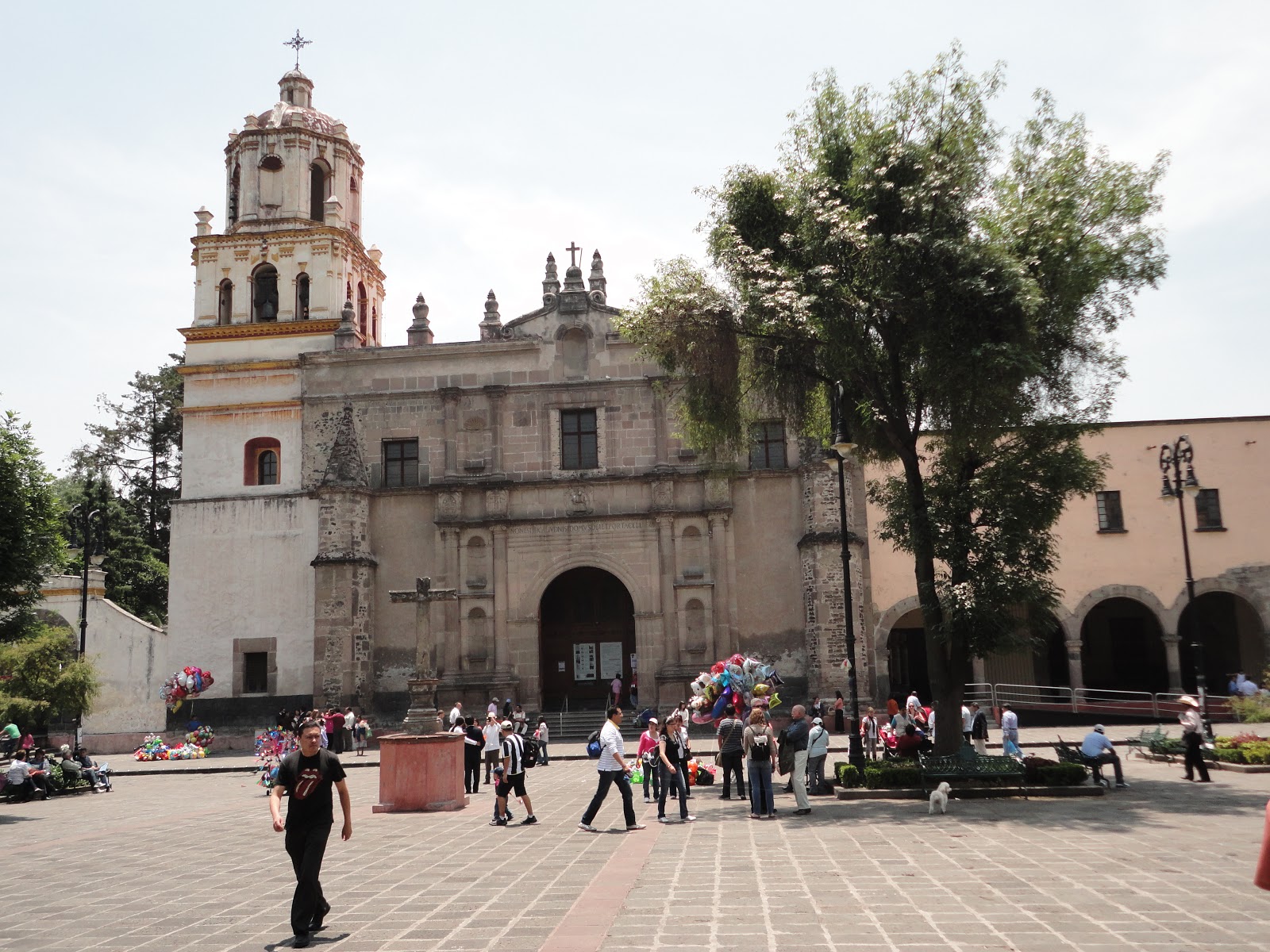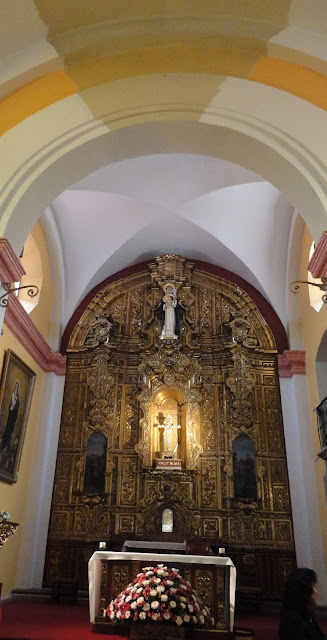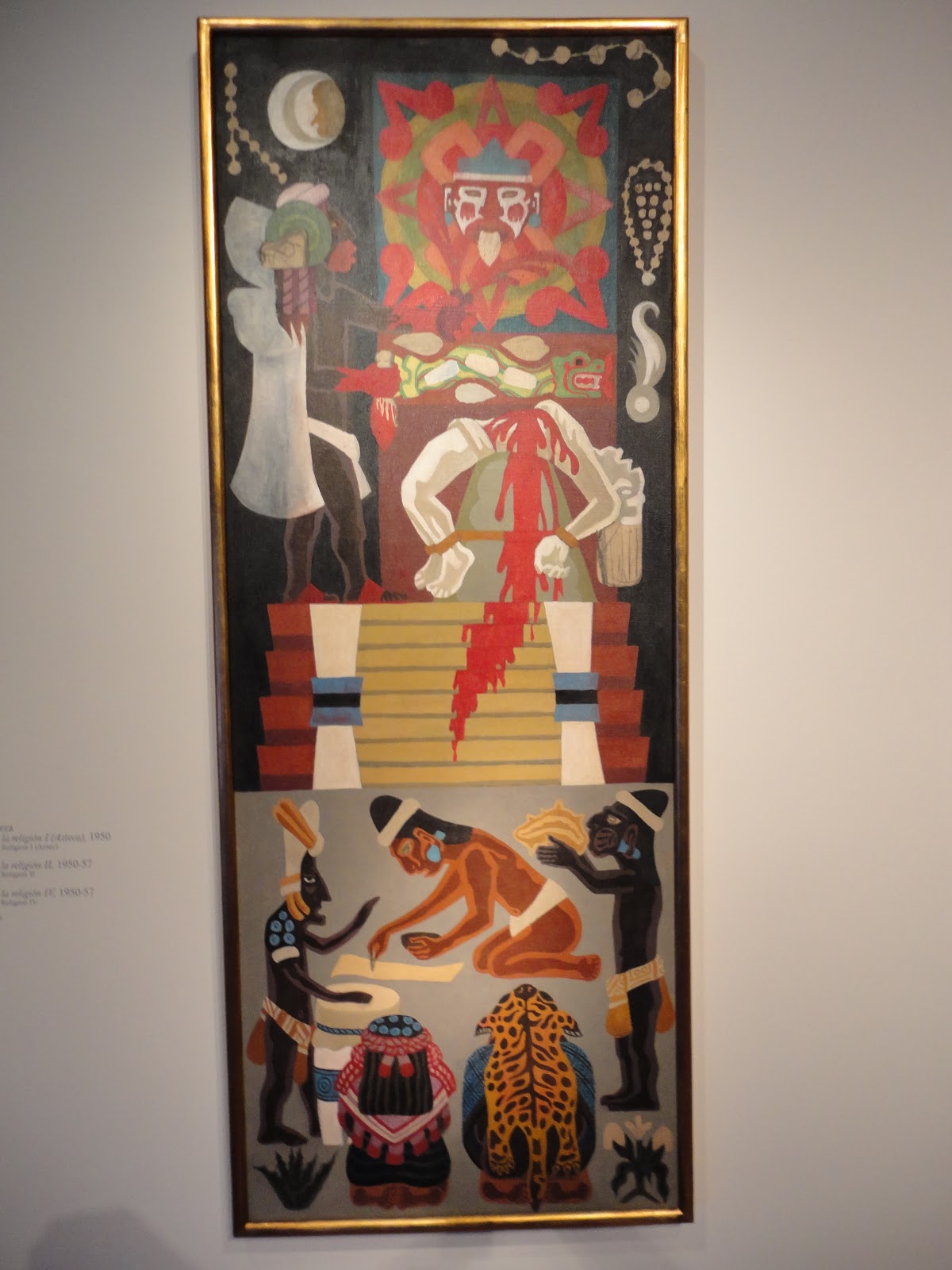Not far from Mexico City, the city of Puebla is located, like the capital, in a valley surrounded by volcanoes. It is currently the fifth-largest city in Mexico, but like the capital it has a beautiful and well-preserved historic center.
Here is a view of the city taken from the civic center which occupies the site of a former fort on a hillside above the downtown historic area.
The zocalo (the main square) is dominated by the cathedral, which is actually larger than the metropolitan cathedral in Mexico City.
There is a legend about the bells for the towers being too heavy to be lifted up into the belfries, and the builders fretting about how they were going to get them into place. One night, it is said, when the city was asleep, the angels came and lifted the bells into place... (When I heard the story I commented, "I think angels have better things to do!")
The cupola is over 40 meters high, and dominates the center of the city
Naturally, the interior of the cathedral was decorated for Christmas.
There are something like 70 historic churches in the center of Puebla, one of them is the Jesuit Church, Iglesia de la Compania, which has these fantastic baroque carvings on the exterior.
I was particularly struck by the exteriors of two other churches -- this pink one! -- which I've forgotten the name of.
Puebla is known for its tile work, called talavera, and the church dedicated to Our Lady of Guadalupe has a tiled exterior. If you look closely you can see the larger tiles tell the story of the Virgin of Guadalupe, which is important not only to the religious but also the social and cultural history of Mexico.
One of the most fascinating sites in the city is the Museo Casa del Alfenique. Alfenique refers to an elaborate merengue confection and the light and airy decoration on the exterior looks like it could be made of egg white and sugar.
The house, which over the years was owned by series of successful merchants, is constructed in the traditional style around a courtyard, and even has its own lavish family chapel.

A good visit -- and a place I look forward to seeing again. A last view of the Zocalo:























































